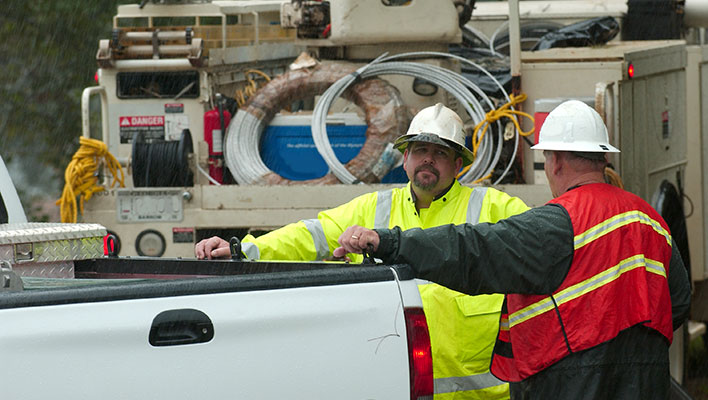The way we work has changed. Although the pandemic has brought unthinkable work trends and job expectations that at first seemed counterproductive, current research and data is demonstrating the opposite. Technology and innovation are the driving forces in revising when, where and how we perform job duties – and they have an added benefit of increasing output and job satisfaction. Wrench time has improved along with retention, but just like the virus itself, how jobs are performed will continue to evolve as living with a dynamic pandemic has become our new normal.
Remote work is the biggest change that has swept the working world. For utilities, decisions were made as to who really needed to be in a control room or staging area, and what crew members could work from home. Even daily morning briefings were channeled into virtual meeting spaces since less people on the premises meant less chance of spreading infection. Some crews were allowed to take trucks home, and others found their morning routine starting right from the job site. Working from pods has also allowed operations to keep employees safe.
But what about productivity and career contentment? According to 10,000 employees surveyed by the Becker Friedman Institute for Economics at the University of Chicago, workers have said they were just as productive working from home as working from the office, while 30% of respondents felt they were even more productive and engaged while working from home. The same survey calculated that commuting time for employees was reduced by 62.4 million hours per day with an aggregate time savings of over 9 billion hours. This is reflected in what some utilities found by allowing team members to begin their day by starting work right from a job site instead of driving to centralized dispatch centers. Crews arrive faster, happier and complete jobs sooner allowing for more tickets to be filled during a workday.
However, keeping track of where resources are at any given moment can be trying unless an operation has the foresight to have the correct software solutions at their disposal. With more players out in the field or at home, paper is not an option. Innovative utilities in this COVID affected world are using resource management solutions like ARCOS Mobile, Crew Manager, and Mobile Workbench to keep tabs on it all. With drop and drag features, the ability to rearrange crews on the fly by skillset, pod or rest, the creation of jobs in the field, and wi-fi mobile connectivity to the back office, operations are running more efficiently as the cloud-based apps work the way that today’s work is being completed.
How has COVID affected your operations? Is it time to upgrade systems to a proven, more effective approach? Contact ARCOS and see how our solutions align with new ways of working.




